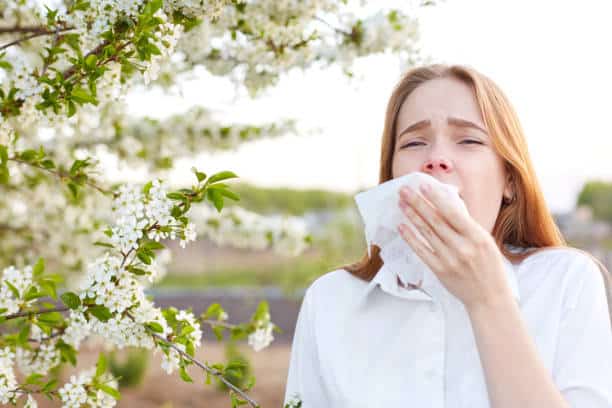

May 15, 2023 | Categories: Health Care, Home
There’s a good chance you or a family member could experience sneezing more in the spring and fall, thanks to Mother Nature’s allergy seasons. About 19.2 million adults were diagnosed with hay fever in the past year, according to fall 2022 data.
Some people experience severe allergy symptoms throughout the spring, and their allergies can make them feel miserable. Below, we explain what causes spring allergies, symptoms, treatments, and allergy prevention tips so you can spend less time sneezing and wiping watery eyes and more time enjoying the season.
Allergies are the body’s response to a (normally harmless) substance that it sees as an “invader.” These “invaders” are usually pollen, animal dander, molds, dust mites, specific foods, or insect stings.2 An allergen is a substance that elicits a reaction from your body’s defense system — your immune system. Your body produces allergic antibodies to find allergens and get them out of your system — stat! A chemical in the body called “histamine” is released during that process, which causes all of those nasty spring allergy symptoms you experience.2
The most likely trigger of spring allergies is tree pollination, which can start as early as February. Then, you’ll face grass pollen later in the spring and summer months. Hay fever — also called “seasonal allergic rhinitis” — is the body’s allergic response to any pollen.2
There are several spring allergy symptoms you might experience. Some people experience just one; others deal with a few of these symptoms, and some are battered with each of these spring allergy symptoms all season long. Symptoms include:
Learn about Spring Allergy Home Remedies, Medical Treatments, and Tips to Prevent Spring Allergies at CareCredit — so you can spend less time sneezing and more time enjoying the season.
Leave a Reply